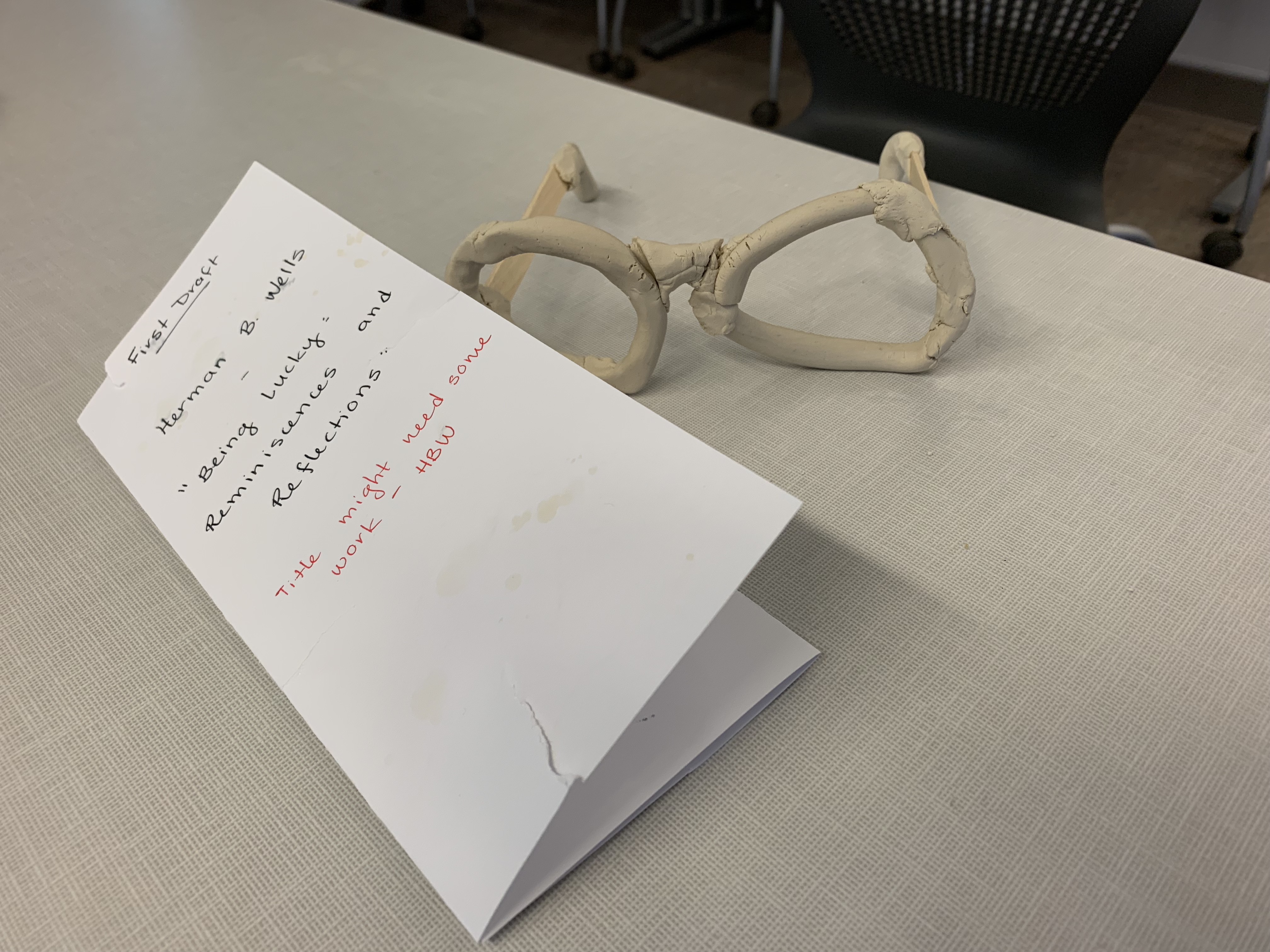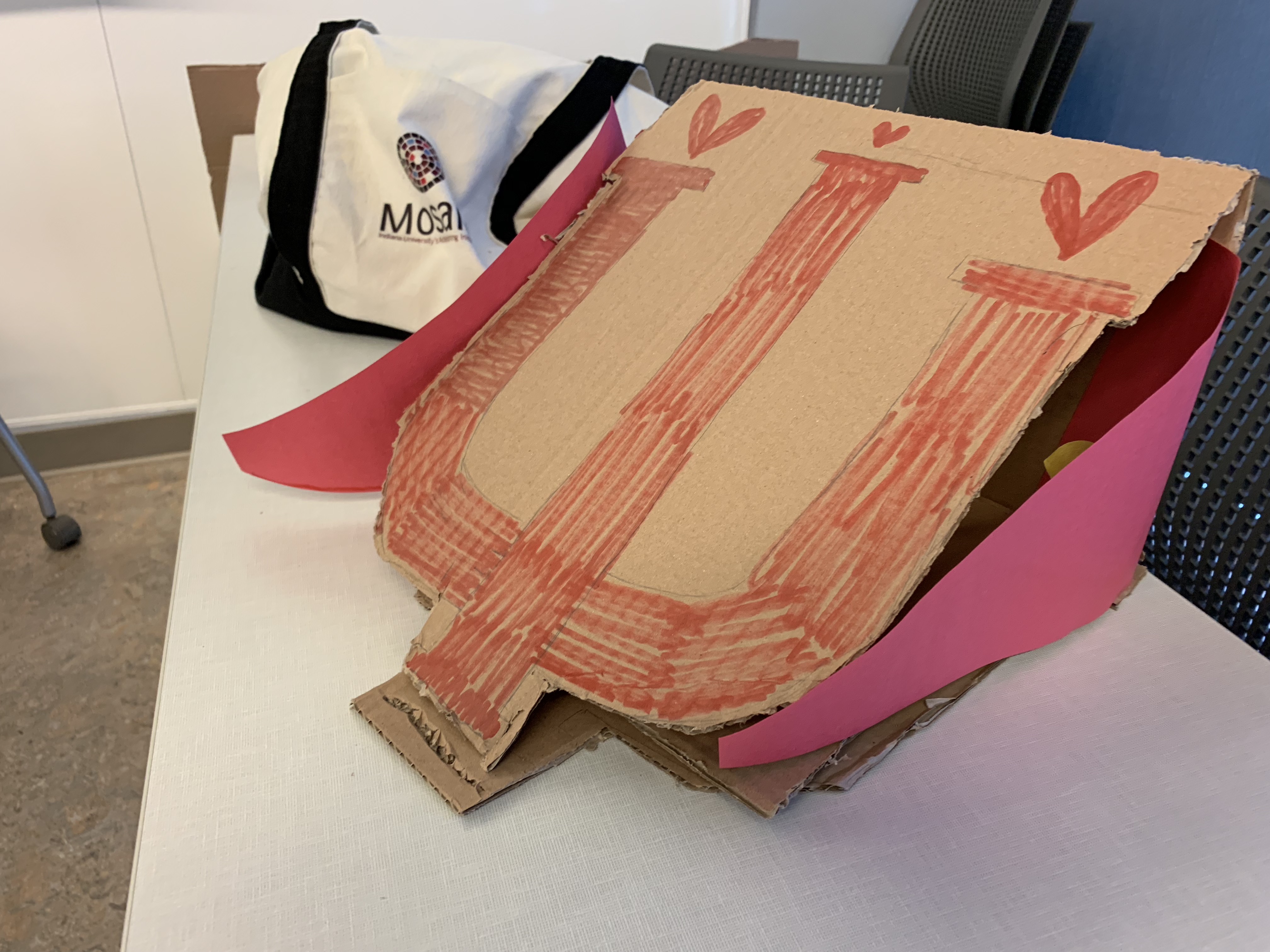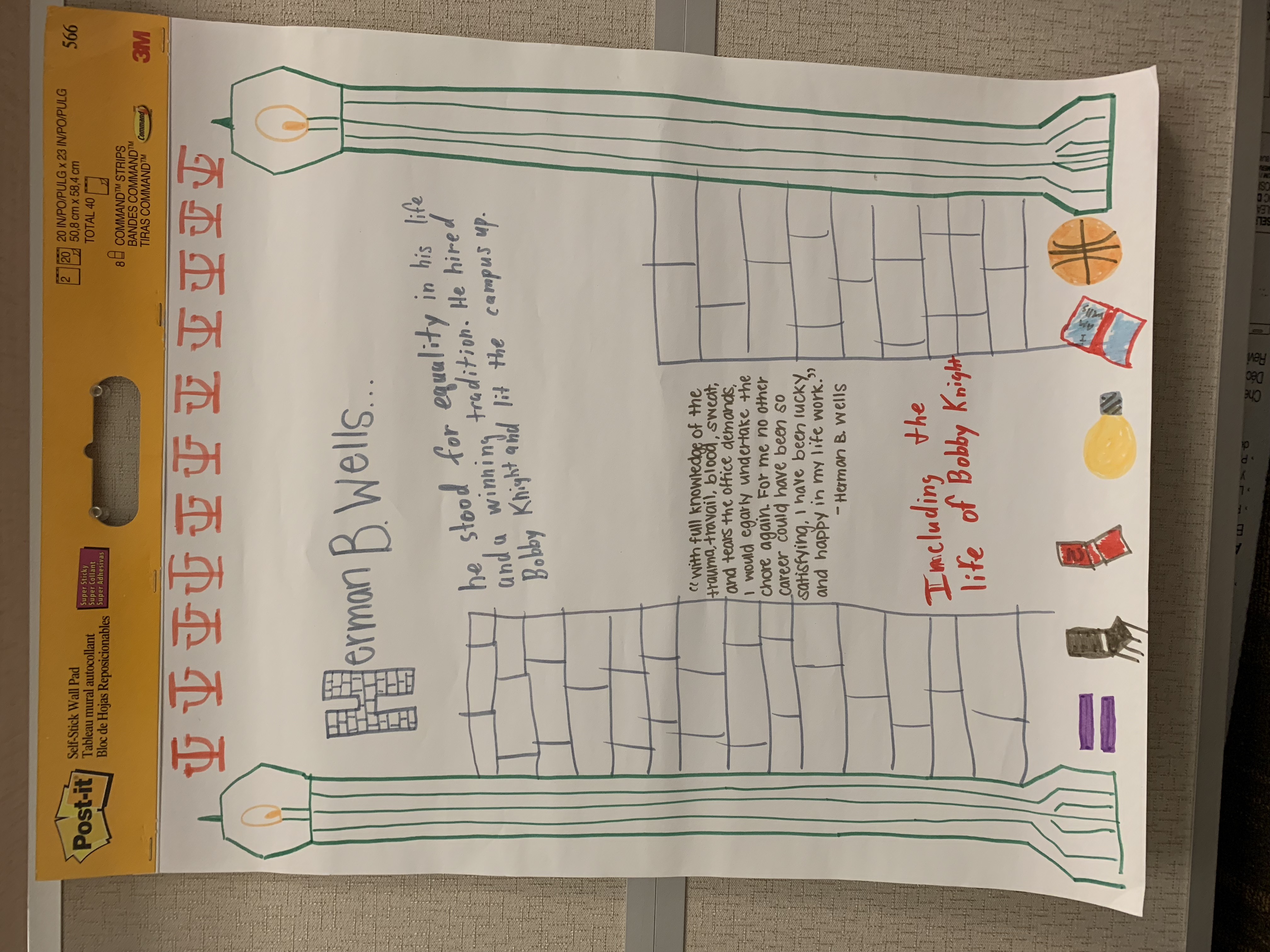Fall 2018: Medieval Saints and Sinners
Table of contents:
- Debate about which saint is our patron
- The relics
- The reliquary
- The manuscript "incipit" (beginning) page
- The saint's life
- The libellus (little book) that documents the saint's canonization
Our debate about Bloomington's patron saint and what it says about our values:
| Bobby Knight | Herman B. Wells | Marc Cuban |
|---|---|---|
|
|
|
His relics
The reliquary containing Wells' relics
The manuscript "incipit" (beginning) page
The Saintly Life of Herman B. Wells
Wells grew up in Jamestown, Indiana and right after he finished high school he began working at a bank to help pay for his college. After he made enough money, he started to go to school in Chicago but quickly told his family that he wanted to transfer to Indiana University. He argued with his father over this but ultimately convinced him with the argument that he would be living and working in Indiana for the rest of his life. During his time on campus, he was very active: pledged Sigma Nu fraternity (and eventually became president), treasurer of IU’s Union Board, played in IU’s band. Wells earned a Bachelor of Science degree in business in 1924. He spent the next two years earning his living as a honest assistant bank cashier at the First National Bank of Lebanon, Indiana, with his father. Wells later went to earn a Master of Arts degree in economics from IU in 1927.
In 1928, Wells took a job working for the Indiana Bankers Association (IBA) as a field secretary. He traveled throughout Indiana visiting banks and developing research on the history of Indiana’s financial institutions, banking regulations, and the causes of bank failures. In addition to working for the IBA, Wells became an instructor in IU’s Department of Economics and Sociology in 1930. Between 1933 and 1935 he took a leave of absence, but when he returned Wells worked three full time jobs: secretary of the Indiana Commission for Financial Institutions, as well as a bank supervisor, Division of Banks and Trust Companies, and supervisor of the Division of Research and Statistics at the newly created Indiana Department of Financial Institutions. In 1935 he became the dream of the School of Business Administration and by 1937 he was offered the job of acting president of IU. He held this position until his retirement in 1962. He then became the first Chancellor of Indiana University in 1962 until his death in 2000.
Herman B. Wells was a true believer in equal rights. He fought for the rights of all students and even ended the segregation of students of color in many places across campus. He ended segregation in the dining facilities, the IU Commons, and with in the Indiana Memorial Union building. He even pushed to recruit Bill Garrett, the first Black student to play as a regular member of the IU basketball team. Bill Garrett was also the first black student to play regularly in the big ten conference, so he was the most progressive man in the midwest.
Herman B. Wells was a firm champion of academics. He tried to make the entirety of the campus available for the pursuit of knowledge. One day he was walking around campus with a book. Anywhere that he could not read the book he placed a flag on the ground marking the spot for the placement of a light. He did this to illuminate the whole campus and dedicated his career to the furthering of education. These lights still stand around the campus to remember Well’s dedication to his pursuit of education of the University he lead.
Herman B. Wells is also responsible for the numerous athletic legacies during his time here at Indiana University. The most memorable of those legacies is that of the “Bobby Knight Era.” The impact that Bobby Knight had on the culture, tradition, and environment when it came to athletics in today’s games is still present. The competitive atmosphere, the need to out-play the opposition, and the chants and crowds that fill the arenas around the sporting complex can be pointed to its apex during this era. Again, thanks to the choice that Herman B. Wells help make to bring Bobby Knight to IU Bloomington.
"During the past 25 years I personally signed the diplomas of all graduates. Neither printing press nor mechanical device of any type has been used to multiply my signature… whether I recognized the name or not, in the act of signing I felt some individual participation in the joy and satisfaction of each graduate who had won his degree with conscientious work and application." - Herman B. Wells
"With full knowledge of the trauma, travail, blood, sweat, and tears the office demands, I would eagerly undertake the chore again. For me no other career could have been so satisfying, I have been luck and happy in my life work,” - Herman B. Wells
The libellus (photos unavailable)


